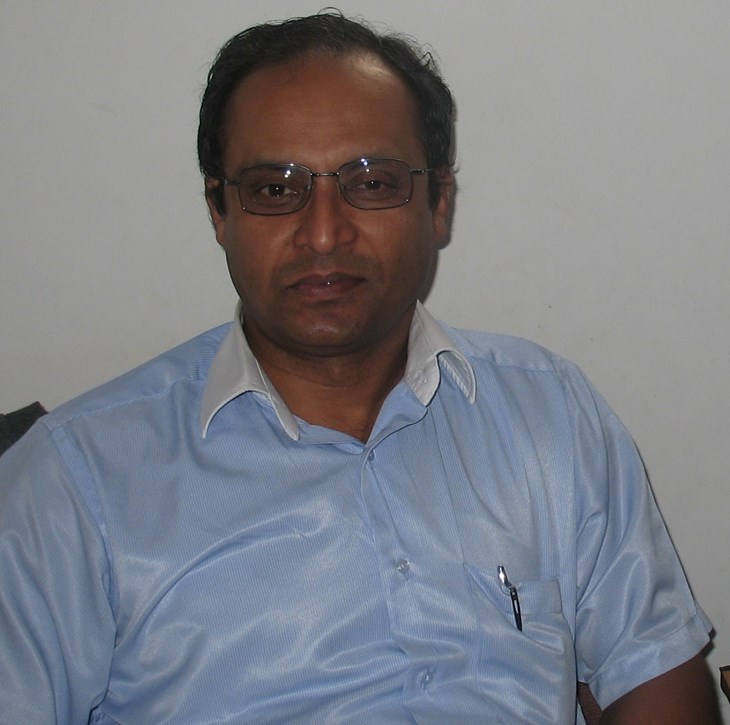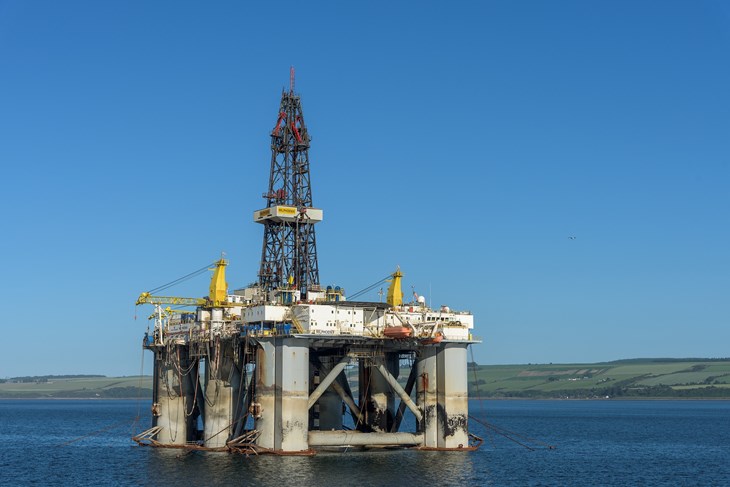What is your background and how did that lead you to becoming a Welding & Metallurgical Specialist?
I graduated from the Metallurgical Engineering program at Bengal Engineering College/ University of Calcutta (now known as the Indian Institute of Engineering Science and Technology, Shibpur). I followed that with a Masters in Metallurgical Engineering (specializing in metal joining) from the Indian Institute of Technology, Chennai, India. Welding and metallurgical engineering is a really challenging discipline. Since I always like challenges, I chose this profession.
What responsibilities does the title Welding & Metallurgical Specialist involve?
A Welding and Metallurgical Engineer’s role could be multidisciplinary. Depending on where you work, and in what sphere of industries, the Welding and Metallurgical Engineer’s job could be immensely challenging. For example, an Engineering, Procurement and Construction (EPC) organization has to deal with a number of front end engineering and design (FEED) related issues such as: Various design codes, clients’/project specifications, selection of materials (various static & rotating equipment, piping, valves), welding procedure selection/approvals as well as approval of fabrication and non-destructive examination (NDE) techniques.
If the same person is with an operating company involved in refining, petrochemicals, oil & gas separation processing /LNG plants or power plants, he has to look after almost all or some of the above, in addition to engineering supports to operating plants. However, the roles and responsibilities may vary for each organization.
What are some of the challenging aspects of being a Welding & Metallurgical Specialist? How do you deal with them?
It can be a challenge to lead from the front and to interact with a host of complicated technical issues (e.g. design aspects, materials selection, welding procedure selections/ qualifications, metallurgical/fitness for service analysis, etc.). I always try to stay in touch with the latest developments in my areas of expertise and utilize my varied and multidisciplinary knowledge base.
What are some of the different sectors that you have worked in?
Just some of the different titles I’ve had in a variety of industries include:
-Working for engineering organizations as a fabricator specializing in complex pressure vessels, heat exchangers, piping modules for petroleum refineries, petrochemical projects, oil & gas separation plants, fertilizer (urea and ammonia) plants and power plants (both nu- clear and non-nuclear).
-Working for organizations providing technical certification, laboratory services and metallurgical consulting (specializing in the offshore oil & gas industries).
– Working as a Welding Specialist for a petroleum refinery (hydro cracking plants) construction.
– Working as a Welding & Procurement Inspection & Expediting Specialist in a large EPC organization for downstream petrochemical plants.
-Working in power plants, both nuclear and conventional (coal fired & hydro power).
Is there one of those that you particularly enjoyed?
Yes, a Welding and Metallurgical Engineer’s role involved in fabricating industries such as refining, petrochemicals, fertilizers and offshore oil & gas equipment/modules are always challenging due to the materials and design diversities. I thoroughly enjoyed my past roles in these areas. Such diversities are much less for conventional power (coal and natural gas fired) plants. Also, design guidelines for nuclear power plants equipment are strict even though the materials varieties are less. However, one does not get the full understanding until he or she handles such well diverse design codes and materials of construction.
In your opinion, what are some of the benefits of combining welding and metallurgy?
One should not weld a metal if correct metallurgy is not known. Metallurgy is an engineering subject, not a science or blacksmith science. A welding engineer with the right background and knowledge of welding processes, and their metallurgical effects on the materials being welded is the best person to advice. The hit and miss approach does not work where exotic materials are involved. With those alloys the role of a welding engineer is definitely value added.
Welding engineering is a unique combination involving metallurgical, mechanical and electrical engineering. Many courses offered under such program are interdisciplinary. A thorough insight involving welding engineering (both mechanical and metallurgical), de- sign codes, materials selection/specifications and damage mechanisms (when materials are put in service) is crucial. Damage mechanisms involve corrosion/integrity engineering, which many welding engineers don’t necessarily need to think about. However, I believe it is better to know the consequences and improve on the next assignment.
What are some of the different types of welding that you are qualified in?
I don’t hold any official certification or ticket because that applies to personnel who actually perform the hands-on welding such as welders or welding operators. However, I had hands-on welding knowledge and understanding of shielded metal arc welding (SMAW), gas metal arc welding (GMAW), flux-cored arc welding (FCAW), gas tungsten arc welding (GTAW), submerged arc welding (SAW) and electro slag strip cladding (ESSC). Welding engineers have to provide the engineering advice, inputs and solutions so it is not a requirement that the welding engineer needs to hold any welding certifications or tickets. However having a welding qualification (ticket) on the top of welding engineering knowledge does not harm anything.
What are some of the different types of projects you’ve been involved with?
I have been involved with a wide range of projects such as many grassroots refineries in India (e.g. Indian Oil Corporation Ltd., Bharat Petroleum Corporation, Hindustan Petroleum Corporation Limited, etc.). As well, I’ve worked on major petrochemical projects in India on behalf of the Indian Petrochemicals Corporation Limited (IPCL) and a special mega petrochemical project for Reliance Industries Limited. But I’ve also been involved with other petrochemical projects in Singapore. I’ve also had experience working with many mega fertilizer projects, specifically ammonia and urea plants, in India for companies like Indo Gulf Fertilisers, Fertilizer Company of India Ltd., etc. Since moving to North America, I’ve worked on some minor projects for a major Crown Utility Corporation based out of Ontario, Canada.
Are there any unusual types of stainless steels/CRAs that are used for specific projects?
Yes, certain types have been proven to work more effectively than others in specific environments. For instance, boiler pressure vessel and piping design codes approve all such materials but without these approvals materials can’t be chosen from specific design. Selection of the best material is driven by process licensors’, clients/owners’ engineering specifications and Engineering Fabricators and have to abide by those.
However, all well-engineered CRAs have applications in various kinds of industries. For example, the super maretnsitic grades are an extreme success in offshore oil and gas application flow lines. This particular grade has a high strength and good corrosion resistance for produced fluids containing CO2. They are cheaper than other competing corrosion resistant alloys. Inconel 625 clad API grade pipelines are the very backbone of offshore oil and gas pipelines for transporting “Sour Crude and Gas.” These CRAs are very specific to offshore oil & gas industries.
On the other hand, austenitic grades (300 series) have been the backbone of stainless steels for many years and still continue to be. They have very predictable levels of corrosion resistance with excellent mechanical properties and fabrication qualities make them an ideal choice in many instances. They’re popular in the sectors of oil and gas (both for upstream and downstream projects), nuclear, petrochemicals and fertilizers and continues to be the popular choice. Austenitic (300) grades are always a suspect in Chloride containing environments. In recent years super austenitic or duplex stainless steels have had many reliable applications in such environments.
Duplex/super duplex stainless steels have been one of the great inventions and developments of the past four decades and have replaced many materials including austenitic stainless steels in many applications (especially offshore oil & gas environments). They are twice as strong as regular austenitic or ferritic stainless grades and significantly better in toughness and ductility than ferritic grades but lower than austenitic grades. Overall they have good corrosion resistance with superior pitting and crevice corrosion. Duplex/super duplex stainless steels often have a lower cost than their austenitic counterparts of similar corrosion resistance. Due to the lower alloying content (Cr, Ni), duplex stainless steels can be lower in cost, especially in times of high alloy surcharges. Additionally, it is often possible to reduce the section thickness of engineering components (piping, pressure vessels, valves, pumps, etc.) by selecting duplex/super duplex stainless steel, due to its increased yield strength compared to austenitic stainless steel. The combination can lead to significant cost and weight savings compared to a solution in austenitic stainless steels.
Super austenitic stainless steels, e.g. 254 SMO or 654SMO are other interesting materials of choice in harsh offshore oil and gas production environments. These materials are strong competitors to duplex/super duplex stainless steels. However cost (due to higher alloy contents) and availability are sometimes factors. It provides a wider choice to the designers so as to design components with the highest degree of “materials selection” and reliability.
In your experience, why are certain CRAs used over others?
As the name implies, these alloys, are always chosen for corrosive environments. They prevent corrosion related damages like general corrosion, pitting, crevice corrosion and environmental assisted (stress corrosion) cracking.
Corrosion resistant alloys are essential for providing long term resistance to corrosion for many components exposed to oil and gas production and refining environments. Due to their composition & mechanical properties some CRAs perform better than the others. Also, cost and life cycle of the components are also the crucial factors for choosing the CRAs. For many good organizations, especially in the oil & gas and petrochemical & fertilizer industries such data are proven from the service experiences.
What are some of the challenges of working with stainless steels/CRAs?
CRAs are expensive and complicated alloys. One has to know their metallurgical and corrosion properties to put them in best practice. NACE MR-0175/ISO15156 provides the basic and detailed guidelines for selection of the CRAs in oil & gas (up- stream) environments. Incidentally over the last decades, many NACE and API specifications have also endorsed such alloys for downstream (refining) environments. NACE MR-0103 includes many such alloys and API-TR-938C endorses duplex/super duplex stainless steels for many down- stream applications. Acceptance of the CRAs in NACE/ISO Specifications for extremely demanding service environments such as offshore oil & gas is not easy. In addition to the conventional mechanical testing, CRAs have to pass extremely difficult pitting and crevice corrosion tests, sulphide stress corrosion cracking tests and other tests as mandated by design specifications. Designing and Welding Engineers have to know all these to successfully put the application of CRAs in reality for any project.
How do you cope with some of these challenges?
You have to know the alloys first; gather enough metallurgy, design and corrosion data. Then you have to design and exe- cute the most appropriate welding and metallurgical engineering requirements as below:
1) Select the most appropriate welding process for the CRA to be welded.
2) Select the most appropriate welding consumable(s). Ensure that all the required mechanical and corrosion proper- ties of the consumables match or exceed the CRA base metals.
3) Choose the most optimum welding parameters such that the as welded or as post-welded heat treated (if required) properties of the CRA weld would match, or exceed, and successfully pass all the mechanical and corrosion tests.
4) Exercise the most conservative welding criteria to get the best weld properties.
What do you enjoy about working with stainless steel/CRAs?
The welding of these alloys is always a challenge due to complex metallurgical & welding problems. One should start from the very basics when required (as above).
CRAs are always used for challenging environments. Corrosion and failures to the CRAs could be catastrophic considering the facts that offshore environment is extremely hostile. Hence, a Welding and Metallurgical Engineer has to exercise THE BEST engineering practices to avoid any catastrophic failures.




